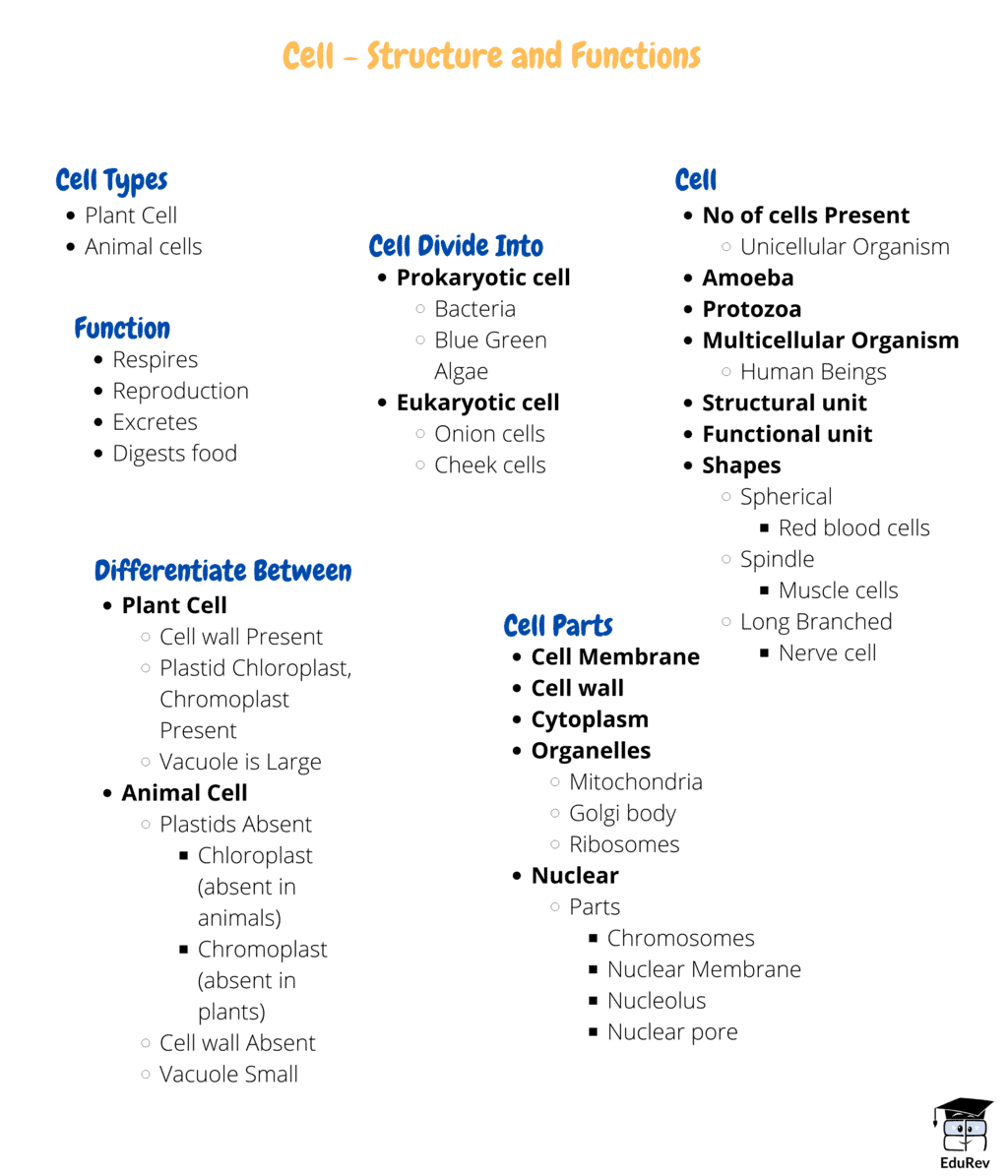UPSC Exam > UPSC Notes > Class 6 to 12 NCERT Mindmaps for UPSC Preparation > Mind Map: Cell - Structure and Functions
Mind Map: Cell - Structure and Functions | Class 6 to 12 NCERT Mindmaps for UPSC Preparation PDF Download

The document Mind Map: Cell - Structure and Functions | Class 6 to 12 NCERT Mindmaps for UPSC Preparation is a part of the UPSC Course Class 6 to 12 NCERT Mindmaps for UPSC Preparation.
All you need of UPSC at this link: UPSC
FAQs on Mind Map: Cell - Structure and Functions - Class 6 to 12 NCERT Mindmaps for UPSC Preparation
| 1. What is the basic structure of a cell? |  |
Ans. The basic structure of a cell consists of a cell membrane, cytoplasm, and a nucleus. The cell membrane acts as a barrier, controlling the movement of substances in and out of the cell. The cytoplasm is a gel-like substance that contains various organelles responsible for different cellular functions. The nucleus houses the cell's genetic material and controls its activities.
| 2. What are the main functions of a cell? |  |
Ans. Cells perform various functions to ensure the proper functioning of organisms. Some of the main functions include cellular respiration to produce energy, protein synthesis for growth and repair, cell division for reproduction, and transport of molecules across the cell membrane. Cells also play a crucial role in maintaining homeostasis and responding to external stimuli.
| 3. How do cells communicate with each other? |  |
Ans. Cells communicate through chemical signals and various signaling pathways. One common method is through direct cell-to-cell contact, where membrane-bound proteins on one cell interact with receptors on another. Another way is through the release of signaling molecules, such as hormones or neurotransmitters, which travel through the bloodstream or extracellular fluid to reach target cells. Cells can also communicate through electrical signals, as seen in nerve cells.
| 4. What are the differences between plant and animal cells? |  |
Ans. Plant and animal cells have several differences. Plant cells have a cell wall made of cellulose, while animal cells do not. Plant cells also have chloroplasts, which are responsible for photosynthesis, while animal cells do not possess them. Additionally, plant cells generally have a larger central vacuole, which helps maintain cell turgidity. Animal cells often have specialized structures like centrioles, which are involved in cell division, whereas plant cells lack them.
| 5. How do cells obtain and utilize energy? |  |
Ans. Cells obtain energy through the process of cellular respiration, where glucose molecules are broken down to release energy in the form of ATP. This process occurs in the mitochondria. Cells also utilize energy for various functions such as active transport, muscle contraction, and protein synthesis. ATP, the energy currency of cells, is generated through metabolic processes like glycolysis, the citric acid cycle, and oxidative phosphorylation.
Related Searches





















